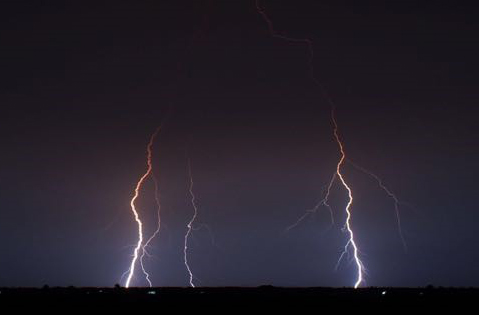Lightning is a spectacular natural phenomenon. The fascination with thunderstorms and lightning is a long-standing one. Today, lightning is known to be closely associated with the electrification and discharge of thunderstorms. Different types of thunderstorms correspond to different lightning characteristics and charge structures. But what are the characteristics of lightning in different types of thunderstorms?
To address this question, scientists attempted to depict the lightning activity and charge structure of a supercell over North China using a lightning network, S-band doppler radar, X-band dual-polarization radar, and ground observations in a recently published study in Advances in Atmospheric Sciences. A team from the Institute of Atmospheric Physics at the Chinese Academy of Sciences found that the supercell was accompanied by severe hailfall, while the lightning frequency showed obviously different characteristics before and after the hailfall. The results showed that +CG (positive cloud-to-ground) lightning accounted for a high percentage of CG lightning, especially during the hailfall stage. The charge structure of the thunderstorm converted from an inversion type to a normal tripolar pattern.

The lightning strokes light up the night sky with various shapes. (Image by WANG Zhichao)
Based on the retrieval of hydrometeor particles from X-band radar data, it was found that graupel, hailstones and ice crystals were the main charged particles in the convective region, while snow, ice crystals and graupel were the main charged particles in the stratiform region.
"We also found that lightning data can serve as an indicator for hazardous weather phenomena. The radar detection range is restricted due to the ‘shelter effect’ of mountains and buildings. In such cases, lightning data could fix the problem," explains Dr. LIU Dongxia, lead author of the study.
In addition, the team also suggests that lightning data could improve short-term forecasting, with the study providing a reference for the use of lightning data in numerical weather models.
The research was supported by a key project of the National Natural Science Foundation of China.
Citation: Liu, D. X., X. S. Qie, Y. C. Chen, Z. L. Sun, and S. F, Yuan, 2020: Investigating lightning characteristics through a supercell storm by comprehensive coordinated observations over North China. Adv. Atmos. Sci., https://doi.org/10.1007/s00376-020-9264-x.
